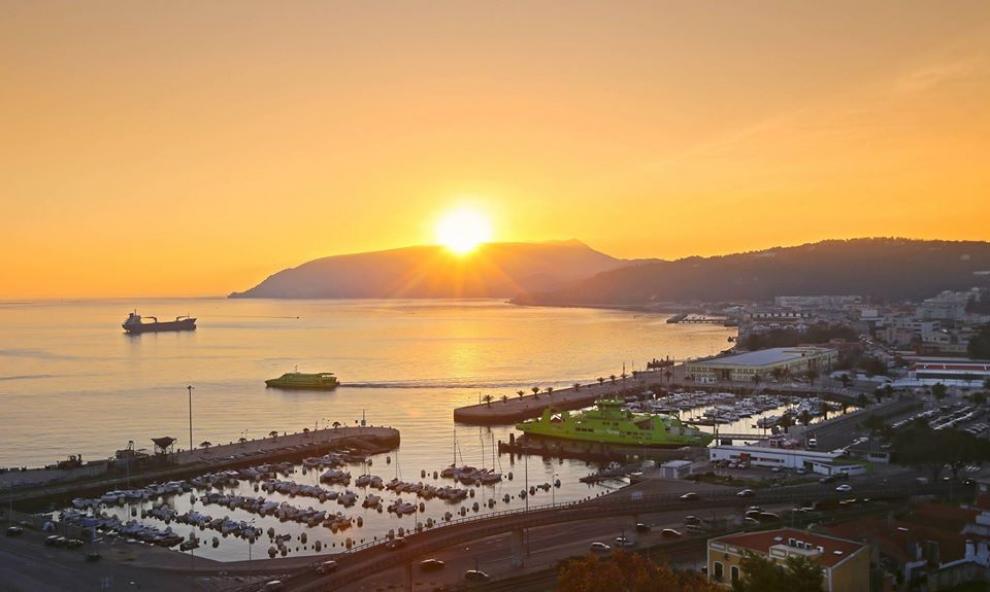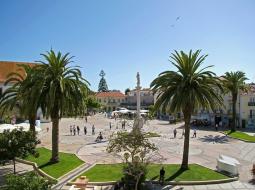Thessaloniki gets ready for its metro launch in November
The underground rapid transit lines have been under construction for almost two decades due to various project delays
 TheMayor.EU logo
TheMayor.EU logo 
In 1249 D. Paio Peres Correia, Master of the Order of Santiago gave the residents of Setúbal privileges and guarantees – through the town charter. The village, mostly dedicated to trade in agriculture, fishing and salt industry, became a municipality.
The monarchs always thought highly of the village: King John II ratified the Treaty of Tordesillas and promoted the construction and restoration of important civil and religious buildings (such as the Monastery of Jesus).
The construction of the City Hall, located in Bocage Square, started in 1526, was rebuilt between 1709 and 1733 and was destroyed by the earthquake of 1755. Many of the 12.955 inhabitants perished.
In 1855 the Municipality expanded its territory and became one of the most important urban centres in Portugal, known all over the world for its salt, oranges, cork and cereals.
It was elevated to the rank of city on 19 April 1860.
As of 1855 the canning industry became a very important economic sector and opened up opportunities for other industries such as tin and lithography. The industrial and economic development of Setúbal fostered the artistic and cultural development and led to the growth of many associations, bands and recreational groups also emerged.
In the 19th century the City Council decided to expand the City Hall, which was completed in 1873 and housed the Municipal Library, the Court of Justice, the Municipal Administration, the Treasury, the Finance Department and the Jail.
On the night of October 4th to 5th, 1910 the establishment of the Republic burned down. Valuable documents that contained the history of Setúbal were lost.
Today, the building of the City Hall - opened on 4 May 1939, is modern, wide and functional, according to the design of the architect Raul Lino (1879-1974), which kept the essence of the previous one, adding only an external frontal arch.
With the expansion of the powers and attributions of Local Authorities following the 1974 revolution, the Chamber constitutes the heart of the City, where municipal intervention is planned and directed in areas as diverse as culture; road construction; waste management; sports promotion; support for children and youth; green areas, mobility; the organization of fairs and markets; urban planning and management.
The city of Setúbal is located on the northern bank of the Sado River estuary, approximately 48 kilometres south of Portugal's capital, Lisbon. It is also the capital of the Setúbal District.
Setúbal combines land and sea, city and natural areas, tradition and modernity. The municipality's territory covers an area of 230.3 km2 and brings together important industrial and service centers.
With 121,185 inhabitants, the municipality is divided into five parishes, two of which are more populous and urbanised and three more rural.
Regarding health care, Setúbal has two public and two private hospitals. The latest records, dated 2018, account for 199 inhabitants per doctor and pharmacist. There are 30 pharmacies, two health centers and seven health extensions.
In the education field, records updated in 2020 show the existence of 18 pre-schools, 31 elementary schools, seven 2nd cycle basic schools, ten 3rd cycle basic schools, six secondary schools, three artistic schools, 3 vocational schools and 4 higher education/polytechnic schools.
The municipal holiday is celebrated on 15 September.
The business fabric of the municipality of Setúbal is made up of 6,298 companies, (data from 2018).
Regarding the number of companies by sector of activity, about 77% of the companies in the municipality are included in the tertiary sector. The tertiary sector encompasses trade, tourism, transport and financial activities. There are 5075 companies in this sector.
The secondary sector, which includes industrial transformation activities, construction and energy production, with 1083 companies, represents 16.6% of the municipality's business fabric.
Finally, the primary sector is the least represented, although still very important, as one of the activities that this sector includes is fishing, which is a business with a long tradition in the municipality.
Regarding size, the municipality's business fabric is mostly made up of micro-enterprises (approximately 94%).
The areas of activity with the largest number of companies are: the construction of buildings (residential and non-residential), the purchase and sale of real estate, restaurants, cafes, business and management consultancy, accounting and auditing, real estate mediation, maintenance and repair of motor vehicles, road freight transport.
However, it is the medium and large companies that have the largest turnovers in the municipality, namely in the industrial activities of pulp, paper and cardboard production, cement manufacture, pesticide and agrochemical products production and soft/non-alcoholic drinks production.
Regarding the legal form, about 43% of the companies are limited liability companies, 30% sole proprietorship and 22% individual entrepreneurs.
Regarding employment, industry is the area of activity with the greatest employability, with around 28% of employees in the municipality. General and business services, construction, and retail trade each represent 10% employability. Accommodation and catering with a considerable weight in the municipality's business fabric represents about 8%. The areas of activity with the lowest employability are information and communication technologies as well as energy and environment.

Setúbal represents a naturally stunning world of adventure, knowledge and multiculturalism that lends colours, smells and flavours to a region that combines the best of tradition with the challenges of modern times. Setúbal in and of itself is a world of sensations.